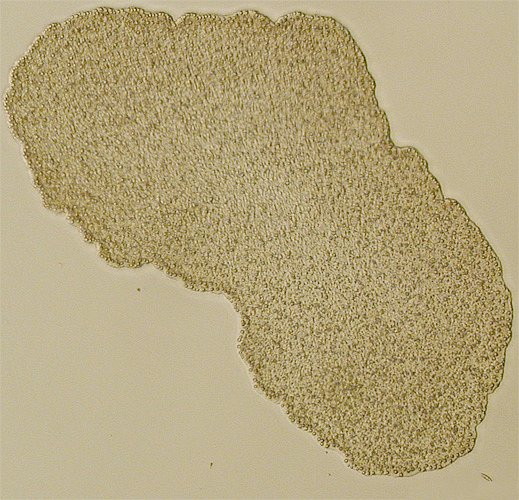Why can’t reports in the media accurately convey the basics of evolution? And why can’t scientists make a dedicated effort to clarify things whenever they give an interview? What hope is there for clarifying the most fundamental concepts when every story seems to reinforce misconceptions?
From the Discovery Channel:
Ancestor For All Animals Identified
A sperm-looking creature called monosiga is the closest living surrogate to the ancestor of all animals, according to new research that also determined animal evolution may not always follow a trajectory from simple to complex.
Yet another find of the study, published in the latest PLoS Biology, is that Earth may have given rise to two distinct groups of animals: bilaterians — animals with bilateral symmetry, like humans — and non-bilaterians, which include corals, jelly fish, hydra, unusual, often poisonous, creatures known as cubozoans, and other organisms.
Free-living, unicellular organisms called choanoflagellates, however, could be on every person’s family tree, so long as it was a gigantic one.
…
They determined that so-called “simple” and “lower” tier animals, such as corals and jellyfish, evolved in parallel to “higher” animals, like seemingly more complex insects and even humans. On the tree of life, monosiga then currently holds the root position for the latter group.
Please, let’s try to get this right from now on. No study reconstructing phylogenetic relationships between modern taxa tells you what the ancestor of those taxa was. It may provide some clues, but all species being examined are derived in some ways and primitive in others.
No biologist who knows anything about evolution would suggest that evolution “always follow[s] a trajectory from simple to complex”. There is no such thing as “higher” and “lower”, though this pre-evolutionary idea apparently is hard to abandon.
And not every rearrangement of proposed evolutionary relationships is a revolution. Many of the deep nodes have been enigmatic for a long time, so it’s not a surprise when they move around based on improved information. Here is how I, an evolutionary biologist, react to each new molecular phylogeny that moves animal branches around:
“Neat. I wonder if it will hold up. It will be interesting to think about what this means in terms of major patterns.”
For a much better take on this new phylogeny written by someone with expertise, see Todd Oakley’s latest post. If we could just get more scientists to write blogs…
(Incidentally, the idea that the ancestors of animals were choanoflagellate-like organisms dates to the 19th century. I even parodied this well-known idea on a shirt).
________________________
Get your Darwin Year gear here.

